-
Report Scope
-
Report Coverage 27
-
Research Methodology 27
-
Research Methodology For Global Market Study 29
- Geographical Analysis 29
- Demand Side & Supply Side Analysis 30
- Data Synthesis & Bridging 30
- Automotive Market Estimation – A Snapshot 30
-
Report Description 33
-
Executive Summary
-
Market Dynamics
-
DRIVERS 39
- Increasing Consumer Demand For Safety, Security, Comfort, And Efficiency 39
- Stringent Government Regulations 40
- Rising Demand For High And Medium End Vehicles 41
- Expansion Of Global Auto-Manufacturers Into New Emerging Markets 41
- Rising Sensor Content In An Automobile As Per Moore’s Law 42
-
CHALLENGES 43
- Increasing Pricing Pressures 43
- Underdeveloped Aftermarket Services 44
-
OPPORTUNITIES 45
- Electromobility 45
- Future Demand For Autonomous Cars And Connected Vehicles 46
- Emerging Technologies Such As Combo Sensors: 47
-
INdustry Analysis
-
Porter’s Five Forces Analysis 48
- Threat From New Entrants 49
- Bargaining Power Of Buyers 50
- Bargaining Power Of Suppliers 51
- Threat From Substitutes 52
- Intensity Of Competitive Rivalry 53
-
Automotive Consortium 54
- Center For Automotive Research (Car) Industrial Consortium 54
- Genivi Alliance 56
- Japan Automobile Manufacturers Association (JAMA) 57
- Open Automotive Alliance 57
- Alliance Of Automobile Manufacturers 58
- United States Council For Automotive Research (USCAR) 59
-
Automotive Market By Sensor Type
-
Introduction 61
- Market Statistics 62
-
Pressure Sensor 66
- Pressure Sensor Types—Chassis 67
- Pressure Sensor Types—Power Train 68
- Pressure Sensor Types—Body Systems 69
- Key Trends 70
- Key Challenges 71
- Key Market Players 71
- Market Statistics 71
-
Temperature Sensor 73
- Temperature Sensor In Chassis 74
- Temperature Sensor In Power Train 74
- Temperature Sensor In Body System 76
- Key Market Players 77
- Market Statistics 77
-
Position Sensor 79
- Position Sensor In Chassis 80
- Position Sensor In Power Train 81
- Position Sensor In Body System 82
- Key Trends 83
- Key Market Players 83
- Market Statistics 84
-
Motion Sensor 86
- Motion Sensor In Chassis 87
- Motion Sensor In Power Train 87
- Motion Sensor In Body System 88
- Key Trends 89
- Key Challenges 90
- Key Market Players 91
- Market Statistics 91
-
Optical Sensor 94
- Optical Sensor In Chassis 94
- Optical Sensor In Power Train 95
- Optical Sensor In Body System 95
- Key Trends 100
- Key Challenges 101
- Key Market Players 102
- Market Statistics 102
-
Torque Sensor 104
- Torque Sensor Types—Chassis 104
- Torque Sensor Types—Power Train 105
- Key Trends 106
- Key Market Players 107
- Market Statistics 107
-
Gas Sensor 109
- Gas Sensor In Power Train 109
- Key Trends 110
- Key Market Players 111
- Market Statistics 112
-
Level Sensor 113
- Level Sensor Types—Power Train 114
- Market Statistics 114
-
Other Sensors 115
- Electric Current Sensor 115
- Mass Air Flow Sensors 116
- Market Statistics 116
-
Automotive Sensor Market By Technology
-
Introduction 118
- Micro-Electro-Mechanical Systems (MEMS) 119
- Non-Electro-Mechanical Systems (Non-Mems) 125
- Nano-Electro-Mechanical Systems (NEMS) 129
-
Automotive Sensor By Vehicle Type
-
Introduction 131
-
Conventional Fuel Cars 132
- Sensors In Chassis By Conventional Fuel Vehicle Type 133
- Sensors In Power Train By Conventional Fuel Vehicle Type 136
- Sensors In Body System By Conventional Fuel Vehicle Type 141
-
Alternative Fuel Car 145
- Sensors In Chassis By Alternative Fuel Vehicle Type 146
- Sensors In Power Train By Alternative Fuel Vehicle Type 148
- Sensors In Body System By Alternative Fuel Vehicle Type 150
-
Heavy Vehicles 152
- Market Statistics 153
- Sensor In Trucks 153
- Sensors In Off-Road Vehicle 154
-
Global Automotive Sensor Market By Geography
-
Introduction 155
- Market Statistics 157
-
America 158
- Market Statistics 159
- US. 159
- Mexico 162
-
Asia-Pacific (APAC) 163
- Market Statistics 164
- Japan 165
- China 167
- India 170
- South Korea 172
-
Europe 174
- Market Statistics 174
- Germany 175
- UK. 177
-
Rest Of The World 179
- Market Statistics 179
- Africa 180
-
Automotive Sensor Market: Key Developments & Strategies (2022–2030)
-
Introduction 182
-
Mergers & Acquisitions 182
-
New Product Launch/ Development 184
-
Partnership, Collaboration & Joint Venture 185
-
Others (Awards, Recognitions, Events) 186
-
Company Profiles
-
Analog Devices Inc. 188
- Company Overview 188
- Product Portfolio 189
- Financials 190
- Key Developments 194
-
AVAgo Technologies 195
- Company Overview 195
- Product Portfolio 196
- Financials 197
- Key Developments 200
- Analyst Insight 201
-
Bosch Sensortec GmbH 202
- Company Overview 202
- Product Portfolio 202
- Financials 204
- Key Developments 207
- Analyst Insight 207
-
Bourns INC. 208
- Company Overview 208
- Product Portfolio 208
- Key Developments 209
- Analyst Insight 211
-
Continental Corporation 212
- Company Overview 212
- Product Portfolio 212
- Financials 213
- Key Developments 217
-
CTS Corporation 219
- COMPANY OVERVIEW 219
- Product Portfolio 219
- Financials 221
- Key Developments 223
- Analyst Insight 224
-
Delphi Automotive LLP 225
- Company Overview 225
- Product Portfolio 225
- Financials 227
- Key Developments 229
- Analyst Insight 231
-
Denso Corporation 232
- Company Overview 232
- Product Portfolio 232
- Financials 234
- Key Developments 236
- Analyst Insight 238
-
FREESCALE Semiconductor Holdings Ltd 239
- Company Overview 239
- Product Portfolio 240
- Financials 241
- Key Developments 243
-
GE Measurement & Control Solutions 245
- Company Overview 245
- Product Portfolio 245
- Financials 247
- Key Developments 249
- Analyst Insight 250
-
Gill Sensors & Controls 251
- Company Overview 251
- Product Portfolio 251
- Key Developments 253
-
Hella KGaA Hueck & Co. 254
- Company Overview 254
- Product Portfolio 254
- Financials 256
- Key Developments 259
- Analyst Insight 260
-
Infineon Technologies Summary 261
- Company Overview 261
- Product Portfolio 262
- Financials 263
- Key Developments 267
- Analyst Insight 268
-
Melexis Microelectronic Integrated Systems 269
- Melexis Microelectronic Integrated Systems Summary 269
- Product Portfolio 270
- Financials 272
- Key Developments 275
-
Micronas Semiconductor INC. 276
- Company Overview 276
- Product Portfolio 276
- Financials 278
- Financials By Segment 279
- Key Developments 280
-
Murata Manufacturing Co. Ltd. 282
- Overview 282
- Product Portfolio 283
- Financials 284
- Key Developments 287
- Analyst Insight 288
-
NGK Spark Plugs Co. Ltd. Summary 289
- Overview 289
- Product Portfolio 289
- Financials 291
- Key Developments 293
- Analyst Insight 294
-
NXP Semiconductors 295
- Overview 295
- Product Portfolio 295
- Financials 297
- Key Developments 300
-
PANASONIC CORPORATION Summary 301
- Product Portfolio 302
- Financials 303
- Key Developments 306
- SWOT Analysis 307
-
Sensata Technologies Summary 308
- Product Portfolio 308
- Financials 310
- Key Developments 313
- Analyst Insight 313
-
Stoneridge Inc. Summary 314
- Product Portfolio 314
- Financials 316
- Key Developments 319
- Analyst Insight 319
-
Takata Corporation Summary 320
- Product Portfolio 320
- Financials 322
- Key Developments 325
- Analyst Insight 326
-
TRW Automotive , Inc. Summary 326
- Product Portfolio 327
- Financials 329
- Key Developments 332
- Analyst Insight 333
-
Vishay Intertechnology Summary 334
- Product Portfolio 334
- Financials 336
- Key Developments 339
- Analyst Insight 340
-
List Of Tables
-
SEMICONDUCTOR CONTENT IN ONE CAR ($) 32
-
MARKET SHARE FOR TOP AUTOMOTIVE SENSOR PLAYERS TILL Q1 2018 37
-
AVERAGE NUMBER OF SENSORS IN PASSENGER CARS BY VEHICLE TYPE IN DEVELOPED COUNTRIES 62
-
AVERAGE NUMBER OF SENSORS IN PASSENGER CARS BY VEHICLE TYPE IN DEVELOPING COUNTRIES 63
-
GLOBAL MARKET VOLUME FOR AUTOMOTIVE SENSORS IN PASSENGER CARS (MILLION UNITS), 2022–2030 64
-
GLOBAL MARKET VALUE FOR AUTOMOTIVE SENSORS IN PASSENGER CARS ($ MILLION), 2022–2030 65
-
KEY TRENDS OF PRESSURE SENSOR BODY SYSTEM 70
-
GLOBAL MARKET VOLUME FOR AUTOMOTIVE PRESSURE SENSORS IN PASSENGER CARS (MILLION UNITS), 2022–2030 72
-
GLOBAL MARKET VALUE FOR AUTOMOTIVE PRESSURE SENSORS IN PASSENGER CARS ($MILLION), 2022–2030 73
-
GLOBAL MARKET VOLUME FOR AUTOMOTIVE TEMPERATURE SENSORS IN PASSENGER CARS (MILLION UNITS), 2022–2030 78
-
GLOBAL MARKET VALUE FOR AUTOMOTIVE TEMPERATURE SENSORS ($ MILLION), 2022–2030 79
-
KEY TRENDS OF BODY SYSTEM POSITION SENSOR 83
-
GLOBAL MARKET VOLUME FOR AUTOMOTIVE POSITION SENSORS IN PASSENGER CARS (MILLION UNITS), 2022–2030 85
-
GLOBAL MARKET VALUE FOR AUTOMOTIVE POSITION SENSORS IN PASSENGER CARS ($MILLION), 2022–2030 86
-
KEY TRENDS OF MOTION SENSOR IN BODY SYSTEM 89
-
GLOBAL MARKET VOLUME FOR AUTOMOTIVE MOTION SENSORS IN PASSENGER CARS (MILLION UNITS), 2022–2030 92
-
GLOBAL MARKET VALUE FOR AUTOMOTIVE MOTION SENSORS IN PASSENGER CARS ($MILLION), 2022–2030 93
-
KEY TRENDS OF OPTICAL SENSOR MARKET 100
-
GLOBAL MARKET VOLUME FOR AUTOMOTIVE OPTICAL SENSORS IN PASSENGER CARS (MILLION UNITS), 2022–2030 103
-
GLOBAL MARKET VALUE FOR AUTOMOTIVE OPTICAL SENSORS IN PASSENGER CARS ($MILLION), 2022–2030 104
-
KEY TRENDS IN TORQUE SENSOR MARKET 106
-
GLOBAL MARKET VOLUME FOR AUTOMOTIVE TORQUE SENSORS IN PASSENGER CARS(MILLION UNITS), 2022–2030 108
-
GLOBAL MARKET VALUE FOR AUTOMOTIVE TORQUE SENSORS IN PASSENGER CARS($MILLION), 2022–2030 109
-
KEY TRENDS IN POWER TRAIN GAS SENSORS 111
-
GLOBAL MARKET VOLUME FOR AUTOMOTIVE GAS SENSORS IN PASSENGER CARS (MILLION UNITS), 2022–2030 112
-
GLOBAL MARKET VALUE FOR AUTOMOTIVE GAS SENSORS IN PASSENGER CARS ($MILLION), 2022–2030 113
-
GLOBAL MARKET VOLUME FOR AUTOMOTIVE LEVEL SENSORS IN PASSENGER CARS(MILLION UNITS), 2022–2030 114
-
GLOBAL MARKET VALUE FOR AUTOMOTIVE LEVEL SENSORS IN PASSENGER CARS ($MILLION), 2022–2030 115
-
GLOBAL MARKET VOLUME FOR AUTOMOTIVE OTHER SENSORS IN PASSENGER CARS (MILLION UNITS), 2022–2030 116
-
GLOBAL MARKET VALUE FOR AUTOMOTIVE OTHER SENSORS IN PASSENGER CARS($MILLION), 2022–2030 117
-
KEY DEVELOPMENTS IN AUTOMOTIVE MEMS SENSOR MARKET 124
-
KEY DEVELOPMENTS IN AUTOMOTIVE MEMS SENSOR MARKET 128
-
AVERAGE NUMBER OF SENSORS IN CHASSIS FOR CONVENTIONAL VEHICLES IN DEVELOPED REGIONS 133
-
AVERAGE NUMBER OF SENSORS IN CHASSIS FOR CONVENTIONAL VEHICLES IN DEVELOPING REGIONS 134
-
GLOBAL MARKET VOLUME OF SENSORS IN CHASSIS OF CONVENTIONAL FUEL CARS (MILLION UNITS), 2022–2030 135
-
GLOBAL MARKET VALUE OF SENSORS IN CHASSIS OF CONVENTIONAL FUEL CARS ($ MILLION), 2022–2030 136
-
AVERAGE NUMBER OF SENSORS IN POWER TRAIN FOR CONVENTIONAL VEHICLES IN DEVELOPED REGIONS 138
-
AVERAGE NUMBER OF SENSORS IN POWER TRAIN FOR CONVENTIONAL VEHICLES IN DEVELOPING REGIONS 139
-
GLOBAL MARKET VOLUME OF SENSORS IN POWER TRAIN OF CONVENTIONAL FUEL CARS (MILLION UNITS) 140
-
GLOBAL MARKET VALUE OF SENSORS IN POWER SYSTEM OF CONVENTIONAL FUEL CARS ($ MILLION), 2022–2030 140
-
AVERAGE NUMBER OF SENSORS IN BODY SYSTEM FOR CONVENTIONAL VEHICLES IN DEVELOPED REGIONS 142
-
AVERAGE NUMBER OF SENSORS IN BODY SYSTEM FOR CONVENTIONAL VEHICLES IN DEVELOPING REGIONS 142
-
GLOBAL MARKET VOLUME OF SENSORS IN BODY SYSTEM OF CONVENTIONAL FUEL CARS (MILLION UNITS), 2022–2030 143
-
GLOBAL MARKET VALUE OF SENSORS IN BODY SYSTEM OF CONVENTIONAL FUEL CARS ($ MILLION), 2022–2030 144
-
AVERAGE NUMBER OF SENSORS IN CHASSIS OF ALTERNATIVE FUEL VEHICLES BY REGION TYPE 147
-
GLOBAL MARKET VOLUME OF SENSORS IN CHASSIS OF ELECTRIC CARS (MILLION UNITS), 2022–2030 147
-
GLOBAL MARKET VALUE OF SENSORS IN CHASSIS OF ELECTRIC CARS ($MILLION), 2022–2030 148
-
AVERAGE NUMBER OF SENSORS IN POWER TRAIN OF ALTERNATIVE FUEL VEHICLES BY REGION TYPE 149
-
GLOBAL MARKET VOLUME OF SENSORS IN POWER TRAIN OF ELECTRIC CARS(MILLION UNITS), 2022–2030 149
-
GLOBAL MARKET VALUE OF SENSORS IN POWER TRAIN OF ELECTRIC CARS ($ MILLION), 2022–2030 150
-
AVERAGE NUMBER OF SENSORS IN BODY SYSTEM OF ALTERNATIVE FUEL VEHICLES BY REGION TYPE 151
-
GLOBAL MARKET VOLUME OF SENSORS IN BODY SYSTEM OF ELECTRIC CARS (MILLION UNITS), 2022–2030 151
-
GLOBAL MARKET VALUE OF SENSORS IN BODY SYSTEM OF ELECTRIC CARS ($ MILLION), 2022–2030 152
-
GLOBAL MARKET VALUE OF SENSORS IN HEAVY VEHICLES ($MILLION), 2022–2030 153
-
GLOBAL AUTOMOTIVE SENSOR MARKET VALUE ($ MILLION) FOR PASSENGER CAR, BY GEOGRAPHY, 2022–2030 157
-
GLOBAL AUTOMOTIVE SENSOR MARKET VALUE ($ MILLION) FOR HEAVY VEHICLES, BY GEOGRAPHY, 2022–2030 158
-
AMERICA AUTOMOTIVE SENSORS MARKET VALUE FOR PASSENGER CAR ($ MILLION), 2022–2030 159
-
THE US AUTOMOTIVE SENSOR MARKET VALUE FOR PASSENGER CARS ($ MILLION), 2022–2030 162
-
MEXICO AUTOMOTIVE SENSOR MARKET VALUE FOR PASSENGER CARS($ MILLION), 2022–2030 163
-
APAC AUTOMOTIVE SENSOR MARKET VALUE FOR PASSENGER CAR ($ MILLION), 2022–2030 164
-
JAPAN AUTOMOTIVE SENSOR MARKET VALUE FOR PASSENGER CAR ($ MILLION), 2022–2030 167
-
CHINA AUTOMOTIVE SENSOR MARKET VALUE FOR PASSENGER CAR ($ MILLION), 2022–2030 170
-
INDIA AUTOMOTIVE SENSOR MARKET VALUE FOR PASSENGER CAR ($ MILLION), 2022–2030 171
-
SOUTH KOREA AUTOMOTIVE SENSOR MARKET VALUE FOR PASSENGER CAR($ MILLION), 2022–2030 173
-
EUROPE AUTOMOTIVE SENSOR MARKET VALUE IN PASSENGER CAR ($ MILLION), 2022–2030 174
-
GERMANY AUTOMOTIVE SENSOR MARKET VALUE ($ MILLION), 2022–2030 176
-
THE UK AUTOMOTIVE SENSOR MARKET VALUE FOR PASSENGER CAR ($ MILLION), 2022–2030 178
-
REST OF THE WORLD AUTOMOTIVE SENSOR MARKET VALUE FOR PASSENGER CAR($ MILLION), 2022–2030 179
-
AFRICA AUTOMOTIVE SENSOR MARKET VALUE FOR PASSENGER CAR ($ MILLION), 2022–2030 180
-
List Of FIGURES
-
XX RESEARCH METHODOLOGY 28
-
DIFFERENT PHASES OF RESEARCH METHODOLOGY FOR GLOBAL MARKET 29
-
AUTOMOTIVE SEMICONDUCTOR PRODUCT CATEGORIES 31
-
GLOBAL AUTOMOTIVE SENSOR MARKET VALUE ($ MILLION) BY VEHICLE TYPE, 2022–2030 35
-
GLOBAL AUTOMOTIVE SENSOR MARKET VALUE ($ MILLION) BY GEOGRAPHY, 2022–2030 36
-
COMPARING THE MARKET VALUE FOR PASSENGER CARS SENSOR MARKET VALUE, BY SENSOR TYPE (2018 AND 2025) 38
-
PORTER’S FIVE FORCES ANALYSIS FOR THE GLOBAL AUTOMOTIVE INDUSTRY 49
-
BENEFITS CAR PROVIDES TO ITS MEMBERS 55
-
BENEFITS OF GENIVI MEMBERSHIP 56
-
BENEFITS OF OAA MEMBERSHIP 58
-
PRINCIPLES FOLLOWED BY AUTO ALLIANCE 59
-
USCAR MILESTONES 60
-
PRESSURE SENSOR AND AUTOMOTIVE APPLICATIONS 66
-
CHASSIS PRESSURE SENSORS 67
-
POWER TRAINPRESSURE SENSORS 68
-
BODY SYSTEMPRESSURE SENSOR 69
-
PRESSURE SENSOR PERCENTAGE BREAK UP: BY FUNCTIONAL APPLICATION 71
-
KEY APPLICATIONS OF AUTOMOTIVE TEMPERATURE SENSORS 74
-
POWER TRAINTEMPERATURE SENSOR 75
-
BODY SYSTEMTEMPERATURE SENSOR 76
-
TEMPERATURE SENSOR PERCENTAGE BREAK UP: BY FUNCTIONAL APPLICATION 77
-
KEY APPLICATIONS OF AUTOMOTIVE POSITION SENSORS 80
-
CHASSISPOSITION SENSOR 80
-
POWER TRAINPOSITION SENSOR 81
-
BODY SYSTEMPOSITION SENSOR 82
-
POSITION SENSOR PERCENTAGE BREAK UP: BY FUNCTIONAL APPLICATION 84
-
CHASSISMOTION SENSORS 87
-
POWER TRAINMOTION SENSOR 88
-
CHALLENGES FOR MOTION SENSOR BASED AUTOMATION SYSTEM 90
-
MOTION SENSORPERCENTAGE BREAK UP: BY FUNCTIONAL APPLICATION 91
-
KEY APPLICATIONS OF AUTOMOTIVE OPTICAL SENSORS 94
-
CHASSIS OPTICAL SENSORS 95
-
BODY SYSTEMOPTICAL SENSOR 96
-
OPTICAL SENSORS IN A MODERN VEHICLE 99
-
REAL TIME ON-ROAD VISION BASED SYSTEM 101
-
OPTICAL SENSOR PERCENTAGE BREAK UP : BY FUNCTIONAL APPLICATION 102
-
CHASSIS TORQUE SENSOR 105
-
POWER TRAINTORQUE SENSOR 106
-
TORQUE SENSOR PERCENTAGE BREAK UP: BY FUNCTIONAL APPLICATION 107
-
POWER TRAINGAS SENSOR 110
-
AUTOMOTIVE SENSOR BY TECHNOLOGY 118
-
AUTOMOTIVE VEHICLE TYPE 132
-
CHASSIS OF AN ELECTRIC VEHICLE 146
-
GEOGRAPHICAL ANALYSIS BREAKDOWN FOR THE GLOBAL AUTOMOTIVE SENSOR MARKET 156
-
KEY MERGERS & ACQUISITIONS: 183
-
KEY PRODUCT LAUNCH & DEVELOPMENT: 184
-
KEY PARTNERSHIPS, COLLABORATIONS & JOINT VENTURES: 186
-
OTHER KEY STRATEGIES 187
-
ANALOG DEVICES PRODUCT 189
-
ANALOG DEVICES OVERALLFINANCIALS ($MILLION), 2022–2030 190
-
NET REVENUE BY SEGMENTS, 2022–2030 191
-
NET REVENUE BY REGION, 2022–2030 192
-
NET REVENUE BY PRODUCT, 2022–2030 193
-
AVAGO TECHNOLOGIES MARKETS 196
-
AVAGO TECHNOLOGIES OVERALL FINANCIALS ($MILLION), 2022–2030 197
-
NET REVENUE BY REGION, 2022–2030 198
-
NET REVENUE BY SEGMENT, 2022–2030 199
-
BOSCH SENSORTEC PRODUCTS 203
-
BOSCH OVERALL FINANCIALS ($ MILLION), 2022–2030 204
-
NET REVENUE BY SEGMENT, 2022–2030 205
-
NET REVENUE BY REGION, 2022–2030 206
-
BOURNS INC. PRODUCTS 209
-
CONTINENTAL CORPORATION DIVISION 213
-
CONTINENTAL CORPORATION OVERALL FINANCIALS ($MILLION), 2022–2030 213
-
NET REVENUE BY SEGMENT, 2022–2030 215
-
NET REVENUE BY REGION, 2022–2030 216
-
CTS CORPORATION PRODUCT SEGMENT 220
-
OVERALL FINANCIALS ($MILLION), 2022–2030 221
-
NET REVENUE BY BUSINESS SEGMENTS, 2022–2030 222
-
NET REVENUE BY REGION, 2022–2030 223
-
DELPHI AUTOMOTIVE PRODUCT SEGMENTS 226
-
DELPHI AUTOMOTIVE LLP OVERALL FINANCIALS ($MILLION), 2022–2030 227
-
NET REVENUE BY OPERATING SEGMENTS, 2022–2030 228
-
NET REVENUE BY REGION, 2022–2030 229
-
DENSO CORPORATION SEGMENTS 233
-
DENSO CORPORATION OVERALL FINANCIALS ($MILLION), 2022–2030 234
-
NET REVENUE BY OPERATING SEGMENTS, 2022–2030 235
-
NET REVENUE BY REGION, 2022–2030 236
-
FREESCALE SEGMENTS SNAPSHOT 240
-
OVERALL FINANCIALS ($ MILLION), 2022–2030 241
-
NET REVENUE BY SEGMENT, 2022–2030 242
-
NET REVENUE BY REGION, 2022–2030 243
-
GENERAL ELECTRIC MEASUREMENT AND CONTROL PRODUCTS 246
-
OVERALL FINANCIALS (PARENT COMPANY), ($ MILLION), 2022–2030 247
-
NET REVENUE BY SEGMENT, 2022–2030 248
-
NET REVENUE BY REGION, 2022–2030 249
-
GILL SENSORS PRODUCTS SNAPSHOT 252
-
HELLA KGAA HUECK & CO PRODUCT DIVISION 255
-
HELLA OVERALL FINANCIALS ($MILLION), 2022–2030 256
-
NET REVENUE BY SEGMENT, 2022–2030 257
-
NET REVENUE BY REGION, 2022–2030 258
-
INFINEON BUSINESS SEGMENT SNAPSHOT 262
-
OVERALL FINANCIALS($ MILLION), 2022–2030 263
-
NET REVENUE BY SEGMENTS, 2022–2030 264
-
NET REVENUE BY REGION, 2022–2030 266
-
MELEXIS PRODUCTS BY APPLICATION SNAPSHOT 271
-
OVERALL FINANCIALS ($ MILLION), 2022–2030 272
-
NET REVENUE BY SEGMENT, 2022–2030 273
-
NET REVENUE BY REGION, 2022–2030 274
-
MICRONAS SEMICONDUCTORS OPERATING SEGMENTS 277
-
MICRONAS OVERALL FINANCIALS ($ MILLION), 2022–2030 278
-
NET REVENUE BY SEGMENT, 2022–2030 279
-
NET REVENUE BY REGION, 2022–2030 280
-
MURATA MANUFACTURING CO., LTD. PRODUCT SNAPSHOT 283
-
OVERALL FINANCIALS ($MILLION), 2022–2030 284
-
NET REVENUE BY SEGMENT, 2022–2030 285
-
NET REVENUE BY REGION, 2022–2030 286
-
NGK SPARK PLUGS CO. LTD. PRODUCT SNAPSHOT 290
-
NGK SPARK PLUGS CO. LTD.: OVERALL FINANCIALS ($MILLION), 2022–2030 291
-
NET REVENUE BY SEGMENTS, 2022–2030 292
-
NET REVENUE BY REGION, 2011-14 293
-
OVERALL FINANCIALS ($ MILLION), 2022–2030 297
-
NET REVENUE BY SEGMENT, 2022–2030 298
-
NET REVENUE BY REGION, 2022–2030 299
-
PANASONIC CORPORATION SEGMENTS 302
-
OVERALL FINANCIALS,($ MILION), 2022–2030 303
-
NET REVENUE BY SEGMENT, 2022–2030 304
-
NET REVENUE BY REGION, 2022–2030 305
-
SENSATA TECHNOLOGIES PRODUCTS 309
-
TYPES OF SENSORS 309
-
SENSATA TECHNOLOGIES, INC. OVERALL FINANCIALS ($MILLION), 2022–2030 310
-
NET REVENUE BY SEGMENTS, 2022–2030 311
-
NET REVENUE BY REGIONS, 2022–2030 312
-
STONERIDGE INC. PRODUCTS 315
-
OVERALL FINANCIALS ($MILLION), 2022–2030 316
-
NET REVENUE BY SEGMENT, 2022–2030 317
-
NET REVENUE BY REGION, 2022–2030 318
-
TAKATA CORPORATION PRODUCT DIVISIONS 321
-
TAKATA CORPORATION OVERALL FINANCIALS ($ MILLION), 2022–2030 322
-
NET REVENUE BY SEGMENTS, 2022–2030 323
-
NET REVENUE BY REGION, 2022–2030 324
-
TRW AUTOMOTIVE BUSINESS SEGMENT 327
-
TRW AUTOMOTIVE OVERALL FINANCIALS ($MILLION), 2022–2030 329
-
SALES BY BUSINESS SEGMENTS, 2022–2030 330
-
SALES BY REGION, 2022–2030 331
-
VISHAY INTERTECHNOLOGY PRODUCTS 335
-
VISHAY INTERTECHNOLOGY, INC. OVERALL FINANCIALS ($MILLION), 2022–2030 336
-
NET REVENUE BY OPERATING SEGMENTS, 2022–2030 337
-
NET REVENUE BY REGION, 2022–2030 338
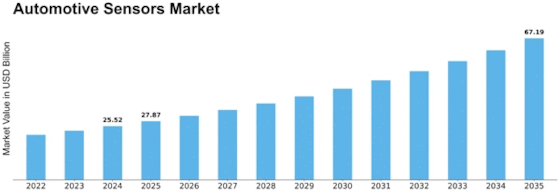

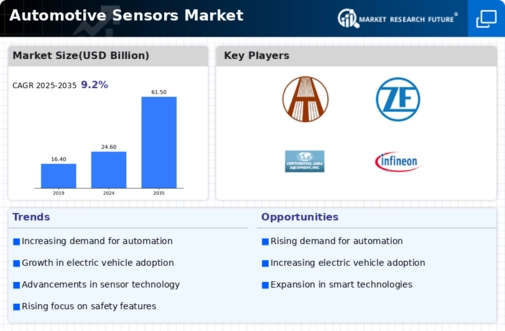
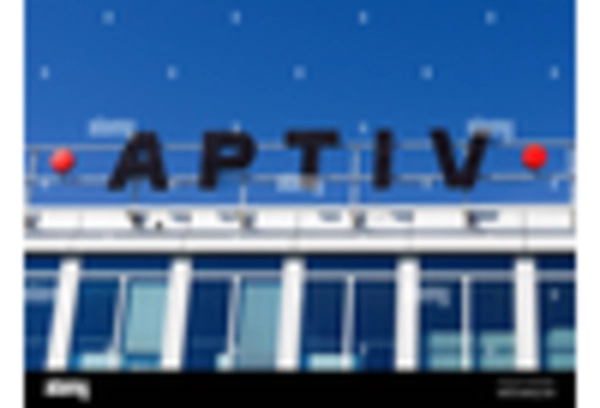
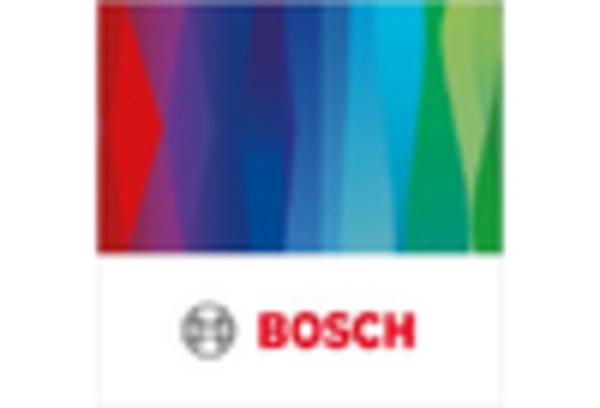

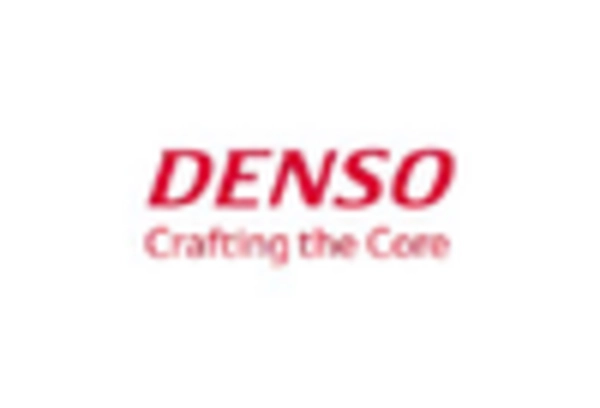










Leave a Comment